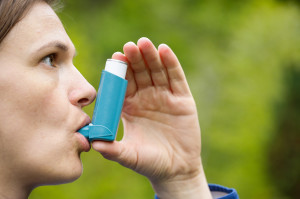 Chronic Obstruction Pulmonary Disease or COPD is the name for a group of progressive lung diseases that cause trouble breathing by the restriction of air flow. COPD includes chronic bronchitis and emphysema as well as refractory asthma and severe bronchiectasis. Since it is a progressive disease, COPD will get worse over time and the damage done to the lungs cannot be reversed.
Chronic Obstruction Pulmonary Disease or COPD is the name for a group of progressive lung diseases that cause trouble breathing by the restriction of air flow. COPD includes chronic bronchitis and emphysema as well as refractory asthma and severe bronchiectasis. Since it is a progressive disease, COPD will get worse over time and the damage done to the lungs cannot be reversed.
An estimated 5.4 percent of Texans surveyed in 2011 had COPD. Globally, more that 65 million people have moderate to severe COPD. According to the World Health Organization COPD is the fourth leading cause of death in the United States and is responsible for 5% of all deaths worldwide. Unfortunately, the symptoms of COPD are often dismissed as allergies, signs of aging or frequent colds. If you have any of the symptoms below you may have COPD. For more information please contact us at 281-341-3000.
Symptoms of COPD
• Breathing difficulty
• Excessive phlegm
• Chronic cough
• Wheezing
• Not being able to take a deep breath
• Tightness in the chest
• Frequent respiratory infections
Causes and risk factors for COPD
• Smokers (current or former) or those exposed to second-hand smoke
• Exposure to air pollutants such as heating fuels, gases, dusts or fumes
• Women are two times more likely to suffer from COPD
• The lower a person’s income the more likely they are to have COPD
• About 70 percent of the 24 million Americans with COPD are under the age of 65
• Having a history of asthma
• Being divorced, widowed or separated
• Not working out regularly
Treatment for COPD
• Quitting smoking – Since smoking is the leading cause of COPD is smoking, quitting smoking is the most effective treatment. Smoking can inflame the linings of the airways in the lungs causing them to lose their elastic quality. Cigarette smoking causes about 80-90 percent of all COPD cases. For more information or methods to help quitting smoking please click here to visit smokefree.gov.
• Pulmonary Rehabilitation – Pulmonary rehabilitation and exercise programs can help relieve some of the symptoms of COPD. Rehabilitation includes exercise training and education/counseling which can be beneficial to almost anyone with lung problems. Pulmonary rehabilitation can be a safe and effective way to help individuals with breathing problems to get healthier, reduce anxiety and enhance their overall quality of life.
• Medications – Inhaled steroids can help reduce inflammation and aid tissue growth and repair. Inhaled bronchodilators can help open the airways of the lungs, making breathing easier.
• Annual vaccines – The flu and pneumonia are far worse for people with COPD and can even be life threatening. Getting annual vaccines is important for all individuals with COPD.
• Regular Checkups – To help prevent the onset of COPD make sure to get regular checkups with a healthcare provider.
• Stay informed – Get educated on COPD by researching the causes of lung disease and COPD.
• Surgery – In extreme cases, lung volume reduction surgery or lung transplantation can be performed to help treat severe cases of COPD.
Living with COPD
Recent research indicates that 82 percent of patients report an increase in quality of life after treatment. However, COPD is different for each person. It is important to work with a trained pulmonary specialist to create a personalized treatment plan.
If you or a loved one suffer from Chronic Obstruction Pulmonary Disease, the highly qualified staff members at OakBend Medical Center may be able to help. Please contact the Pulmonary department for more information or to schedule a consultation by calling 281-341-3000.
